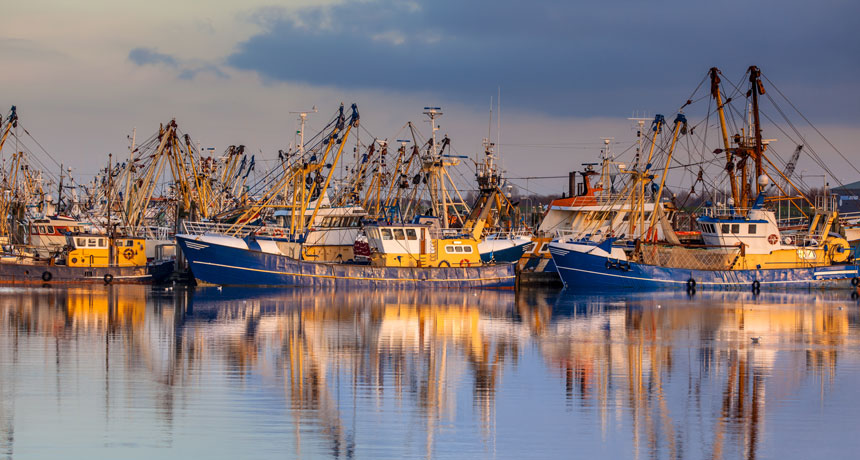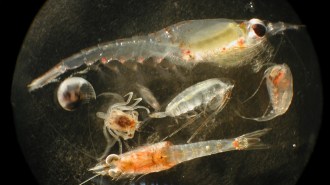
COASTAL CONNECTIONS Thanks to eggs and larvae surfing ocean currents around the world, many fisheries depend on other nations’ spawning grounds to supply their fish stock, a study shows.
Rudmer Zwerver/Shutterstock
- More than 2 years ago
Marine fisheries are typically managed by individual nations. But the fish in those stocks often originate elsewhere, according to a computer simulation of how eggs and larvae from hundreds of fish species ride ocean currents around the world.
That finding means that many nations with economies that rely on fishing must depend on other countries to maintain important spawning grounds. The results of the simulation highlight the importance of international cooperation in sustaining the fisheries that provide millions of people with food and livelihoods, researchers report in the June 21 Science.
Oceanographer Nandini Ramesh of the University of California, Berkeley and colleagues simulated ocean currents transporting the eggs and larvae of more than 700 species of commercially harvested fish among 249 national fishing grounds. More than 90 percent of the world’s fish are caught within these marine territories, which extend a few hundred kilometers off the shores of coastal nations. The simulation accounted for when and where different species lay eggs, as well as the speeds and directions of ocean currents throughout the year.
A vast network of larval flows connects fisheries across the globe, the researchers found. In 114 national territories, at least 1,000 tons of catch per year originates from elsewhere. Many countries, from Indonesia to Norway to Mexico, harvest hundreds of thousands of tons of fish born outside their jurisdictions. For Russia and South Korea, that catch exceeds 1 million tons.
Major spawning hubs off countries like Brazil, Barbados and Kiribati feed larvae into many other territories in the global fishery network. Harm to such major spawning grounds, from overfishing, pollution or other environmental changes, could significantly reduce fish stocks for other nations, Ramesh and colleagues say. On the flip side, good fisheries management by one nation can boost fish populations elsewhere.
This investigation brings attention to an “otherwise invisible and often neglected but essential process” of how fish populate the oceans, says Andrew Kough, a marine ecologist at the Shedd Aquarium in Chicago, who wasn’t involved in the work.
The simulation doesn’t account for other factors that could affect the connections among fisheries, such the movement of adult fish. Still, getting this “general sense for the overall … connectedness of our coasts, with regards to fisheries, is super ambitious,” says James Watson, a marine scientist at Oregon State University in Corvallis, who was not involved in the work.
Based on the recent market value of species studied, more than $10 billion of fish globally are caught each year outside the territory where they were spawned, Ramesh and colleagues estimate. The researchers also identified nations that are heavily reliant on fisheries supplied by other regions for food security, employment and revenues, noting those countries could be particularly hard hit if larval inflows from other spawning grounds were cut off.
Economic risks are highest in the tropics. Inflowing species sustain about a third of the employment in the Caribbean nations of Guyana and Suriname, and 22 percent in the east African archipelago of Comoros. In general, nations with the most severe socioeconomic risks were in the Caribbean, West Africa, Northern Europe and Oceania.




